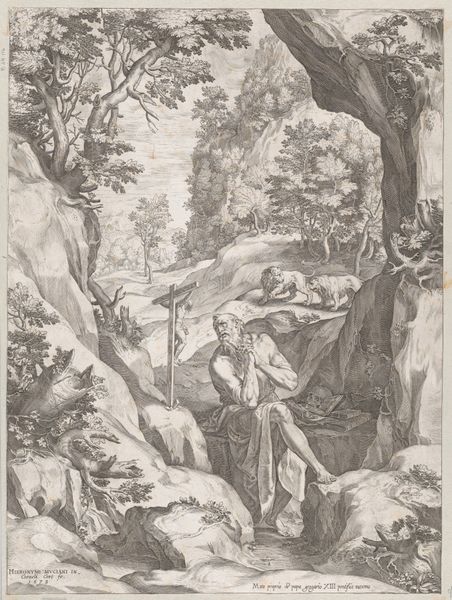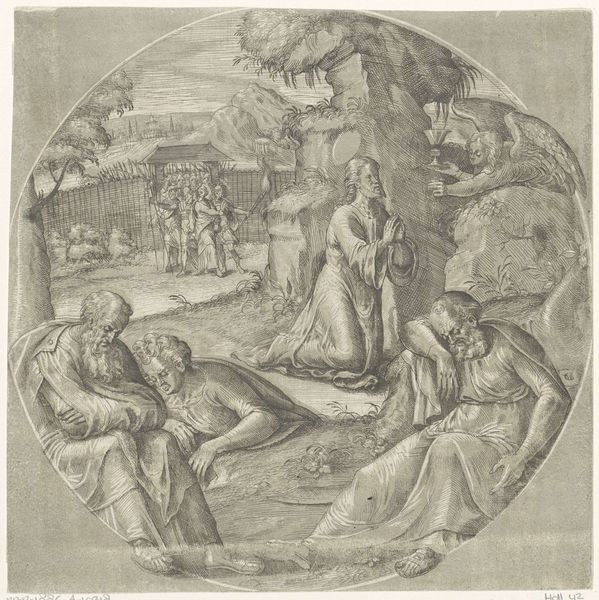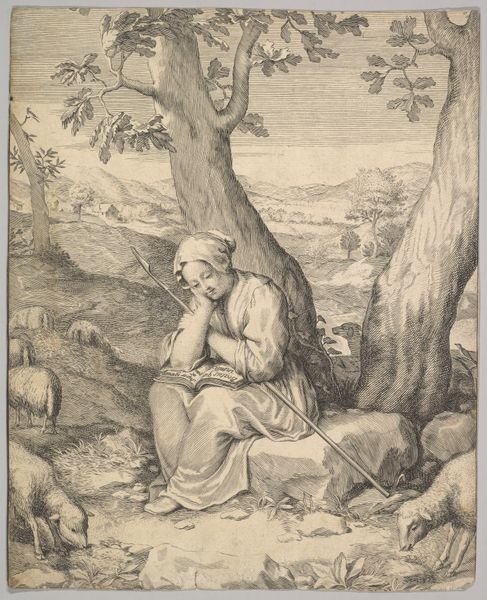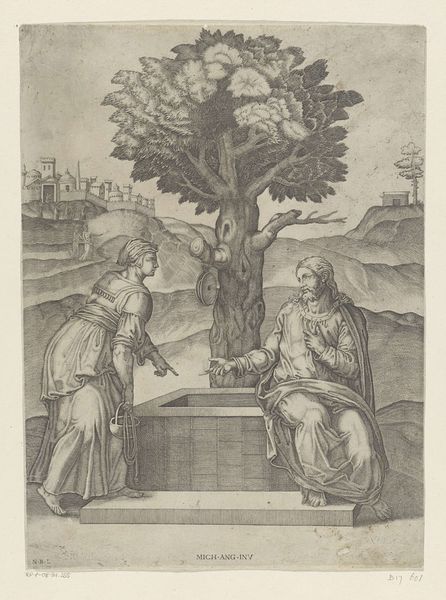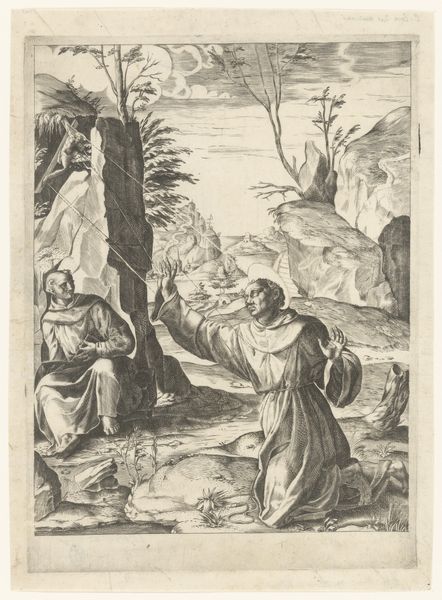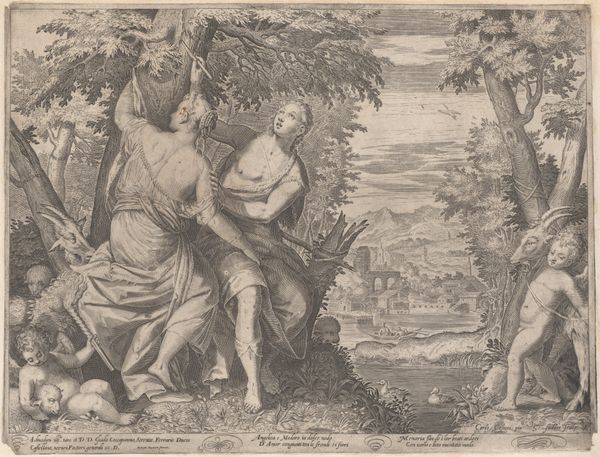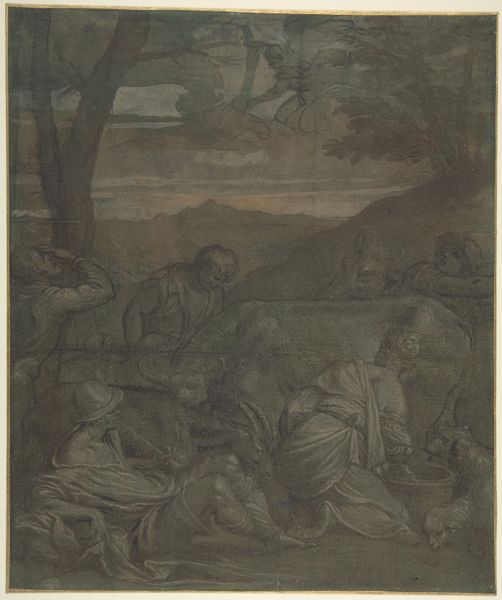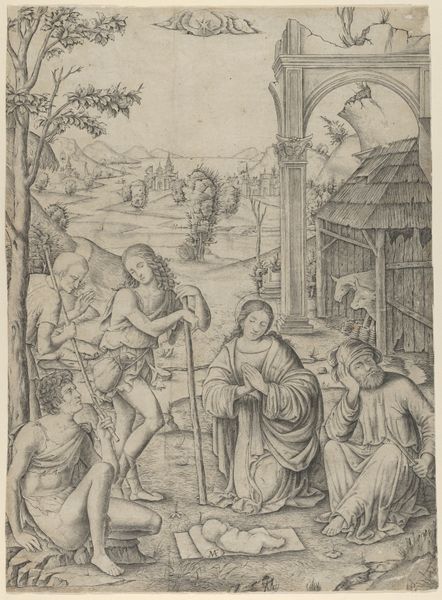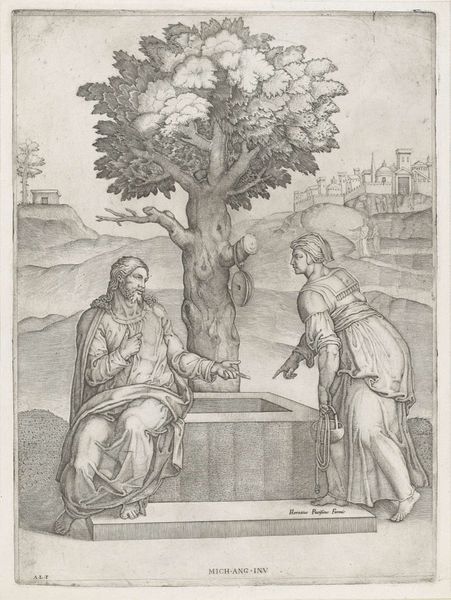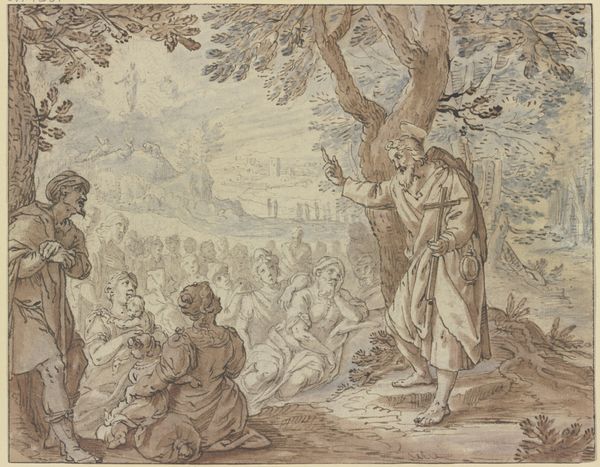
painting, fresco
#
painting
#
landscape
#
figuration
#
fresco
#
oil painting
#
history-painting
#
italian-renaissance
#
watercolor
Dimensions: overall: 221.6 x 150.2 cm (87 1/4 x 59 1/8 in.)
Copyright: National Gallery of Art: CC0 1.0
Editor: This fresco is entitled "Cephalus Hiding the Jewels" by Bernardino Luini, created around 1520 to 1522. The figures are captivating, aren't they? I find it particularly engaging how the story seems to unfold across the landscape, drawing you into its narrative. How do you interpret this work? Curator: Luini's placement of the narrative within an accessible landscape reflects a broader shift in the Italian Renaissance. Instead of lofty allegory, art engaged with a rising merchant class, who desired scenes of everyday life enriched with classical tales. Consider the function of frescoes: they often decorated homes. How does domestic context change your understanding of the artwork? Editor: That’s fascinating. I hadn’t thought about its original location affecting its reception. So, having this mythological scene inside someone's home… almost domesticates it? Curator: Exactly! It's not just a historical painting but an object of aspirational identity. The narrative of Cephalus and Procris becomes a subtle commentary on wealth, trust, and the pitfalls of suspicion—moral lessons cleverly woven into daily life through art. Does that shift your perspective on the piece? Editor: It does! It makes me wonder who would have seen this fresco, and what their lives were like. The history is literally embedded in the paint! I didn’t consider the audience beyond an art-historical context at first. Thanks for the new insight! Curator: And I'm reminded of the power of these domestic artworks to offer intimate views into Renaissance values, and influence culture. The art's purpose transcends aesthetics.
Comments
No comments
Be the first to comment and join the conversation on the ultimate creative platform.
